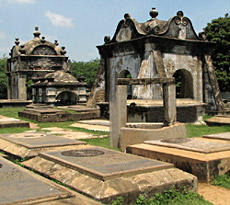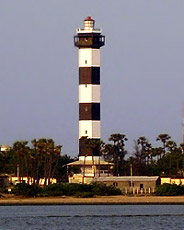In Tamil Nadu, the city Pulicat is located in the district of Thiruvallur. It is situated almost sixty kms north of Chennai city particularly on the seaward side of Sriharikota island blockade that segregates Pulicat Lake from the Bay of Bengal. A narrow water lagoon Pulicat Lake is integrated to the Pulicat city and also got its name from it.
The city Pulicat has a rich history behind it. In the earlier period of 1609, the Dutch settlers had constructed a fort. In fact this Pulicat city turned out to be their main dwelling ground. Numerous invaders took possession of Pulicat city, the last being the British rulers. Britons had occupied Pulicat in 1825, thus becoming an integral part of Madras Presidency. Due to passage of so many long years much of the treasures of Pulicat had gone in to oblivion. Still aura has remained, to a large extent, by the ancient lighthouse that was erected just opposite to the Pulicat Lake.
 At the core of the Pulicat city, there is a burial ground, which dates back to almost 1600. Today, a branch of the Archeological Survey of India have undertaken the responsibility to conserve it and thus prevented it from falling into ashes. Especially, the tombs and graves with inscriptions in Latin and also carvings in skeleton images deserved to be mentioned. It is located just behind the market places of Pulicat. So well protected this burial ground is that hardly any stranger can get to know about its existence.
At the core of the Pulicat city, there is a burial ground, which dates back to almost 1600. Today, a branch of the Archeological Survey of India have undertaken the responsibility to conserve it and thus prevented it from falling into ashes. Especially, the tombs and graves with inscriptions in Latin and also carvings in skeleton images deserved to be mentioned. It is located just behind the market places of Pulicat. So well protected this burial ground is that hardly any stranger can get to know about its existence.
Pulicat is also thronged with beautiful birds especially near the water banks of Pulicat Lake. Almost every year between the months of October and March, myriads of wandering birds take shelter. Although varies bird species are seen, the flamingos are significant, thronging the swamplands adjacent to the lake.
To attract the tourists from nearby region and also from abroad, the traveling system of Pulicat city has been improved over the years. To reach Pulicat, one needs to travel almost fifty four kms from Koyambedu(CMBT). Then he needs to follow hundred ft long road stretching from Koyambedu. After going straight to
"Ennore Port Trust" one enters ` Minjur,` after taking a right turn, one needs to cross then turn first left follows the road, at a stretch of almost seventeen kms. After one reaches " Ponneri- Pulicat" central road, from where a right turn is needed to take & continue driving for four kms till one reaches the `Pulicat Jetty`.
 The tourism industry in Pulicat is growing day by day. People need to pay tax of twenty rupees for vehicles in order to enter the city .For boats, the concerned authority charge 200 to 300 rupees per boat. Each boat can accommodate eighteen adult people. Just a fifteen minute brisk ride can take a tourist to a solitary island, full of `Casuarina plantation`. The scenic beauty of Pulicat city is ideal for picnic. Tourists can also enjoy strolling along the riverbanks. Another place of attraction is visit to the lighthouse after taking permission from the concerned authorities.
The tourism industry in Pulicat is growing day by day. People need to pay tax of twenty rupees for vehicles in order to enter the city .For boats, the concerned authority charge 200 to 300 rupees per boat. Each boat can accommodate eighteen adult people. Just a fifteen minute brisk ride can take a tourist to a solitary island, full of `Casuarina plantation`. The scenic beauty of Pulicat city is ideal for picnic. Tourists can also enjoy strolling along the riverbanks. Another place of attraction is visit to the lighthouse after taking permission from the concerned authorities.
As far as other industries are concerned, a cottage craft with gentle palmary leaves by women, particularly those of Muslim communities, mainly established at Pulicat. The local Palmyra Leaf Co-operative Society exports service and beautiful articles made from Palmyra leaves.
Pulicat is also rich in seafood export center including white and Tiger prawns, jellyfish, finfish and live lagoon etc.



















